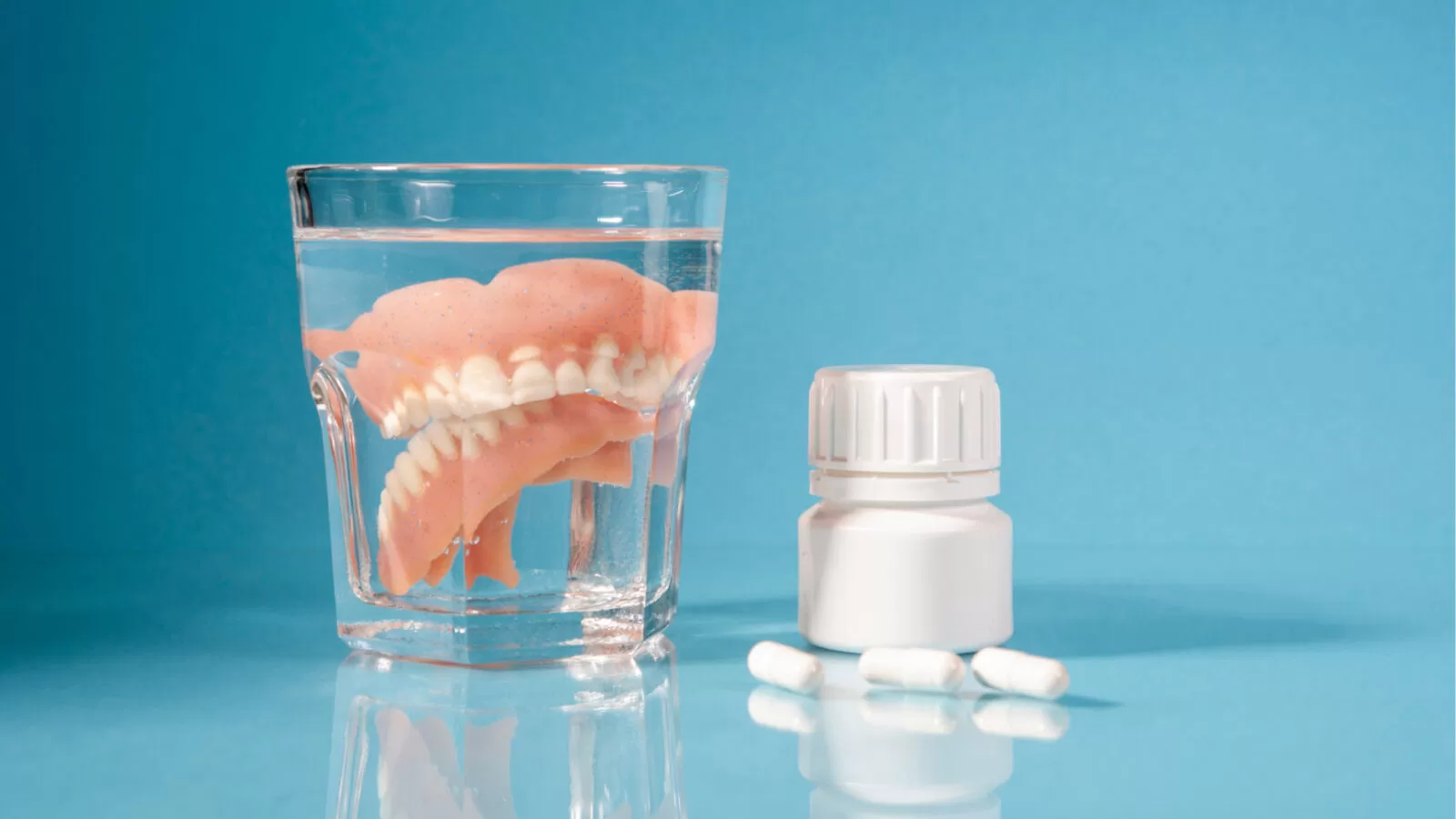
The process of caring for a denture, whether a partial or a complete set, transcends the simple act of scrubbing. It is a necessary, detailed ritual that dictates the longevity of the appliance, the health of the underlying oral tissues, and, ultimately, the wearer’s daily comfort and confidence. Many individuals adopt haphazard or aggressive cleaning habits, often treating acrylic dental materials as if they were natural enamel, a fundamental error that shortens the lifespan of the prosthesis and creates a breeding ground for bacterial and fungal proliferation. The long-term maintenance of dentures demands a nuanced understanding of the delicate materials involved, a strict adherence to soaking protocols, and a proactive awareness of the common pitfalls that can lead to irreversible damage or oral pathology, moving beyond the superficial rinse to a comprehensive, multi-step regimen.
…a necessary, detailed ritual that dictates the longevity of the appliance, the health of the underlying oral tissues, and, ultimately, the wearer’s daily comfort and confidence.
The very first action after any meal or snack should be to meticulously remove the appliance and rinse it thoroughly under a stream of cool, running water. This initial step is frequently underestimated, yet it is critically important for dislodging loose food debris, a simple mechanical action that prevents those particles from drying and adhering firmly to the denture base or the artificial teeth. Furthermore, conducting this immediate rinse over a sink lined with a soft cloth or filled with a small amount of water is a non-negotiable safety precaution; dentures are surprisingly fragile, and an accidental drop onto a porcelain basin or tiled floor can result in immediate, costly, and inconvenient fracturing or warping of the custom-fitted acrylic, emphasizing the necessity of this simple protective measure.
…conducting this immediate rinse over a sink lined with a soft cloth or filled with a small amount of water is a non-negotiable safety precaution…
Daily mechanical cleaning requires a dedicated approach that is distinctly different from brushing natural teeth. The widespread habit of using standard, abrasive toothpaste and a hard-bristled toothbrush must be abandoned immediately. Regular toothpaste contains abrasive particles designed to polish hard enamel, but these same particles will inevitably cause microscopic scratches on the softer acrylic and resin materials of the denture. These minute abrasions, over time, accumulate, creating ideal harbors for plaque, bacteria, and staining compounds, which actually accelerates discoloration and odor retention. Instead, one must employ a specialized denture brush, characterized by softer bristles and a specific head design for contour cleaning, paired with either a non-abrasive denture paste, mild hand soap, or a gentle dishwashing liquid, utilizing cool or lukewarm water exclusively.
…The widespread habit of using standard, abrasive toothpaste and a hard-bristled toothbrush must be abandoned immediately.
The selection of the cleaning agent itself is critical, moving beyond the question of abrasion to the issue of chemical compatibility, particularly for partial dentures incorporating metal components. While effervescent soaking tablets are a popular choice for dissolving plaque and light staining, those containing highly acidic compounds or excessive chlorine-based bleach can corrode the metallic clasps or framework present in some partial dentures. This corrosion compromises the structural integrity and the precise fit of the appliance, leading to instability and potential discomfort. For any denture featuring metalwork, the safest practice involves using designated, non-corrosive effervescent tablets or a short, monitored soak in a very mild, heavily diluted vinegar solution, ensuring that the soak time does not exceed the recommended duration to prevent any material compromise.
…This corrosion compromises the structural integrity and the precise fit of the appliance, leading to instability and potential discomfort.
One of the most profound and harmful errors in denture care is the continuous, unceasing wear of the appliance, often driven by social discomfort or simple forgetfulness. The tissue beneath the denture, which is a mucosal surface perpetually covered by the acrylic base, is deprived of air, subject to constant pressure, and exposed to a concentrated film of bacteria and fungi, predominantly Candida species. This environment is highly conducive to developing denture stomatitis, a chronic fungal infection characterized by inflammation, redness, and discomfort of the underlying palate and gums. The biological necessity is to remove the dentures nightly, allowing the soft tissues of the mouth to rest, recover, and receive exposure to the natural flow of saliva and air, a break that dramatically lowers the risk of oral infections.
…The tissue beneath the denture, which is a mucosal surface perpetually covered by the acrylic base, is deprived of air, subject to constant pressure…
The ritual of overnight storage is equally important as the cleaning itself and is governed by specific requirements related to material integrity. Denture materials, being highly sensitive polymers, must be kept moist to prevent them from drying out, contracting, or warping, changes that would inevitably destroy the precision fit and result in a loose, uncomfortable appliance. Therefore, after the nightly mechanical brushing, dentures must be completely submerged in a container of clean, cool water or a specifically formulated denture-soaking solution. It is a fundamental and often violated rule that hot or boiling water must never be used for cleaning or storage, as the high temperature can irreversibly distort the acrylic resin, rendering the appliance useless and necessitating a costly replacement.
…dentures must be completely submerged in a container of clean, cool water or a specifically formulated denture-soaking solution.
For those who rely on denture adhesives for added stability, an extra layer of meticulous cleaning is required to ensure that all residue is fully removed from both the denture surface and the oral tissues. Leftover adhesive, even a small amount, can harden and become an ideal matrix for plaque and food particle accumulation, creating thick, sticky deposits that are remarkably resistant to simple rinsing and can harbor unpleasant odors. A soft-bristled brush or a piece of gauze used gently on the gum line and the corresponding grooves of the denture can effectively remove these sticky remnants, a step that is essential for maximizing the appliance’s fit and maintaining mucosal health, moving beyond a casual wipe to an intentional, residue-free approach.
…A soft-bristled brush or a piece of gauze used gently on the gum line and the corresponding grooves of the denture can effectively remove these sticky remnants…
Dealing with stubborn stains, particularly those caused by habitual consumption of coffee, tea, or red wine, introduces the temptation of aggressive, homemade whitening remedies. Resorting to pure household bleach or overly concentrated acidic solutions is a dangerous path, as these chemicals can severely weaken the denture material, alter the color pigmentation, or even cause etching that makes the appliance more porous and susceptible to future staining. Mild, food-safe home remedies, such as a paste made from baking soda and water or a soak in diluted white vinegar, offer gentler, scientifically defensible methods for stain management, but even these should be used judiciously and followed by a thorough, neutralizing rinse to prevent long-term damage to the polymer structure.
…Resorting to pure household bleach or overly concentrated acidic solutions is a dangerous path, as these chemicals can severely weaken the denture material…
Beyond the daily care regimen, long-term denture maintenance critically relies on regular, professional dental appointments, a practice many denture wearers mistakenly feel they can forgo due to the absence of natural teeth. However, the dentist’s role evolves from treating teeth to monitoring the entire oral environment. These check-ups are essential for evaluating the fit of the denture, as the underlying jawbone and gum tissue naturally shrink and change shape over time, leading to eventual instability and the need for relining or rebasing. Furthermore, the appointments allow for a vital screening of the oral mucosa for early signs of inflammation, infection, or more serious conditions that may be masked by the continuous presence of the appliance, underscoring the non-negotiable importance of professional oversight.
…long-term denture maintenance critically relies on regular, professional dental appointments, a practice many denture wearers mistakenly feel they can forgo…
Finally, a crucial warning must be issued against the impulse to perform repairs or adjustments when the denture becomes uncomfortable or fractured. The precise fitting of a denture involves complex dental measurements, materials science, and custom contouring, making home repair kits, superglues, or attempts at self-adjustment a near-certain path to irreparable damage. Altering the appliance’s structure can lead to immediate discomfort, tissue trauma, and a complete distortion of the bite, often necessitating a full and expensive replacement. Any concern over fit, a crack, or breakage must be addressed immediately by a qualified dental professional, prioritizing safety and custom-fit integrity over expediency.
…a crucial warning must be issued against the impulse to perform repairs or adjustments when the denture becomes uncomfortable or fractured.
Denture longevity demands a careful, non-abrasive daily regimen, nightly tissue rest, and professional fit checks, avoiding harsh chemicals and dangerous repairs.
